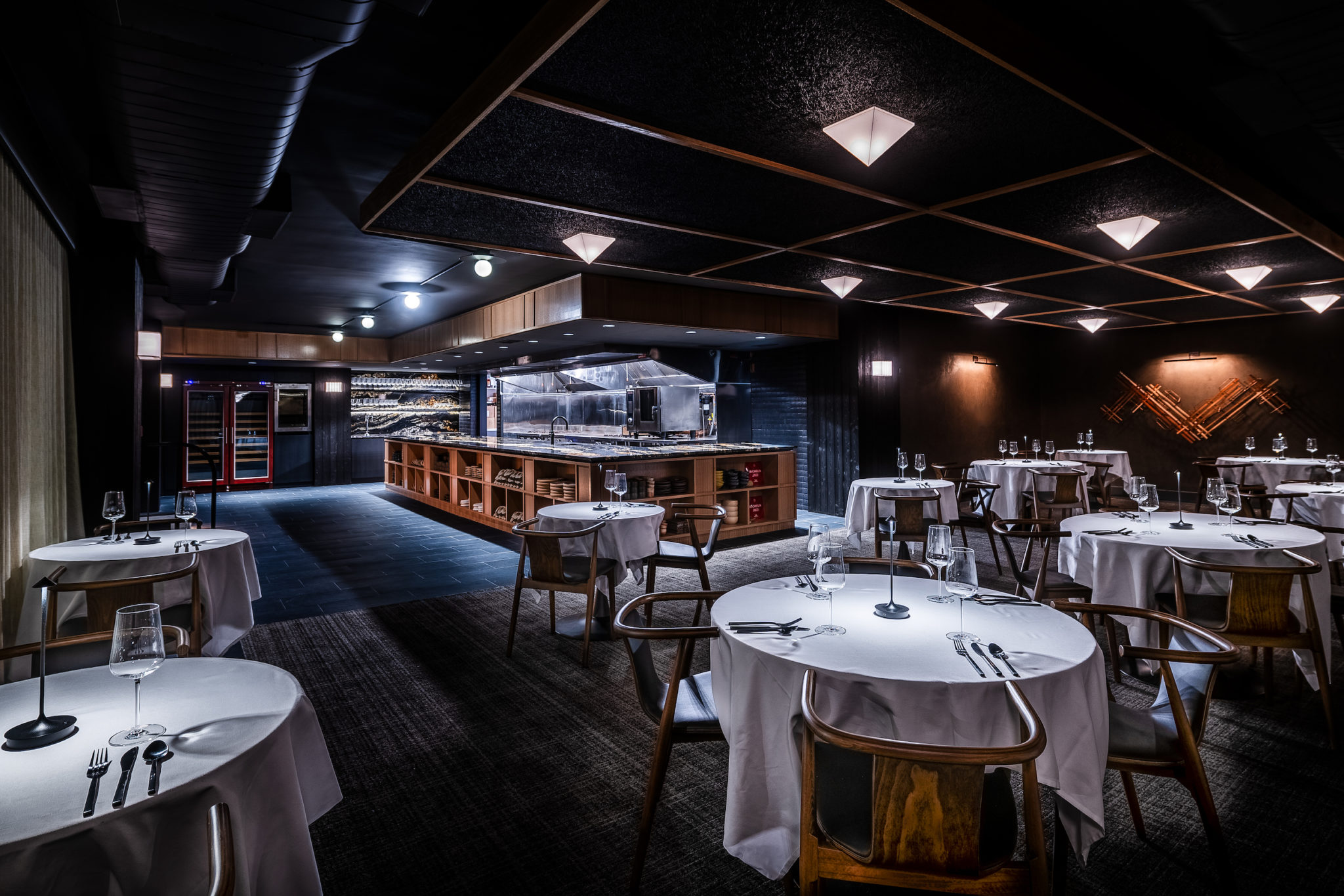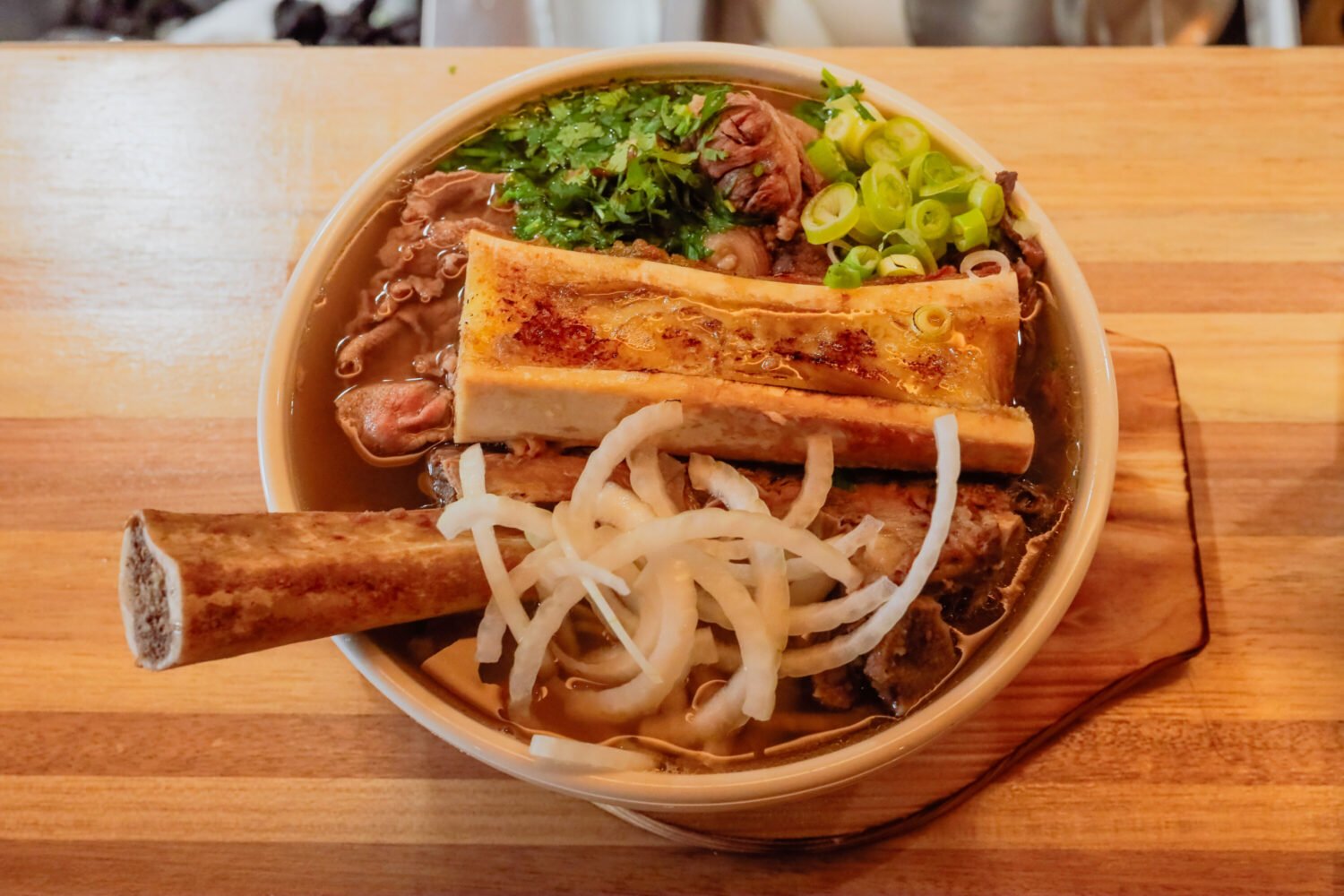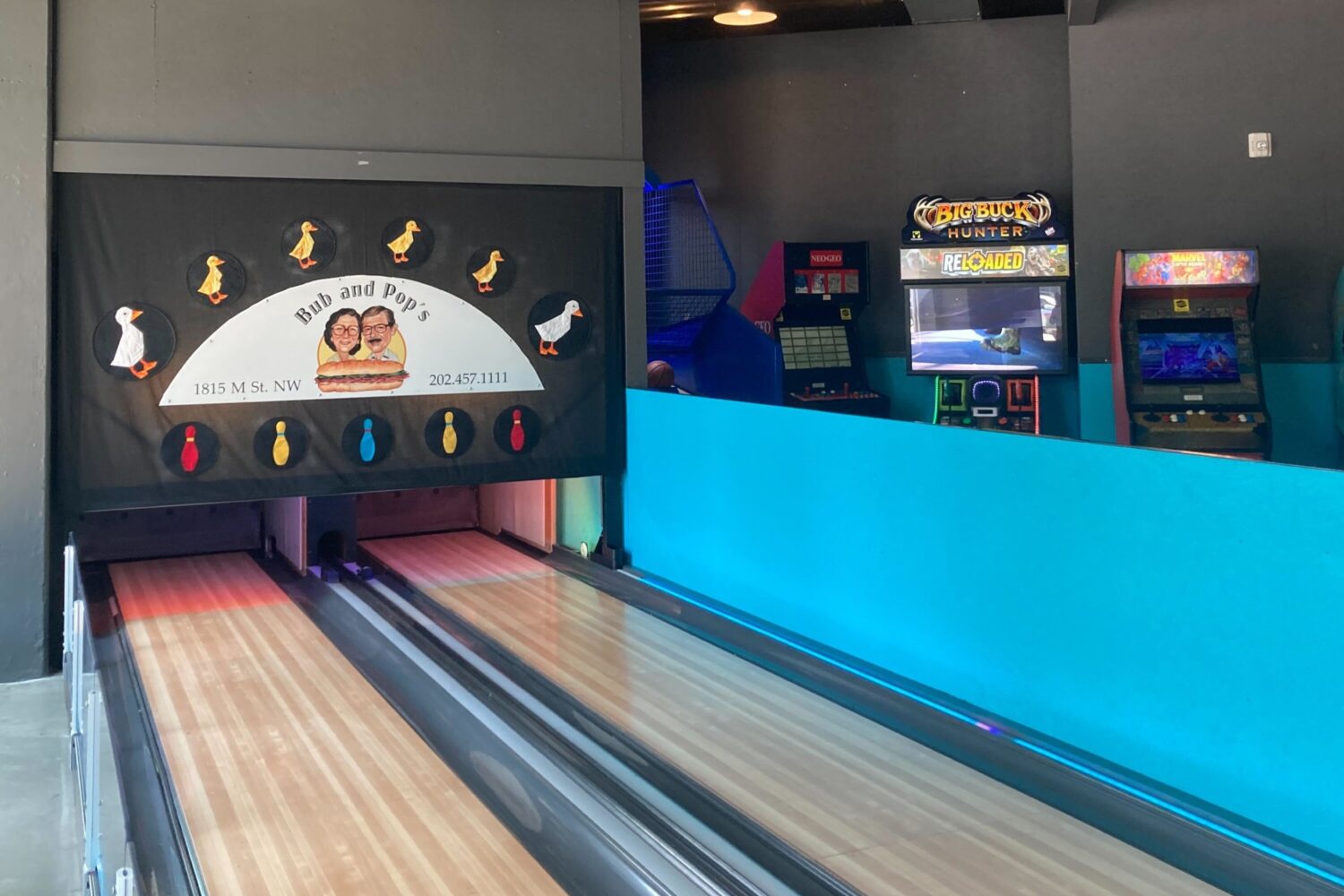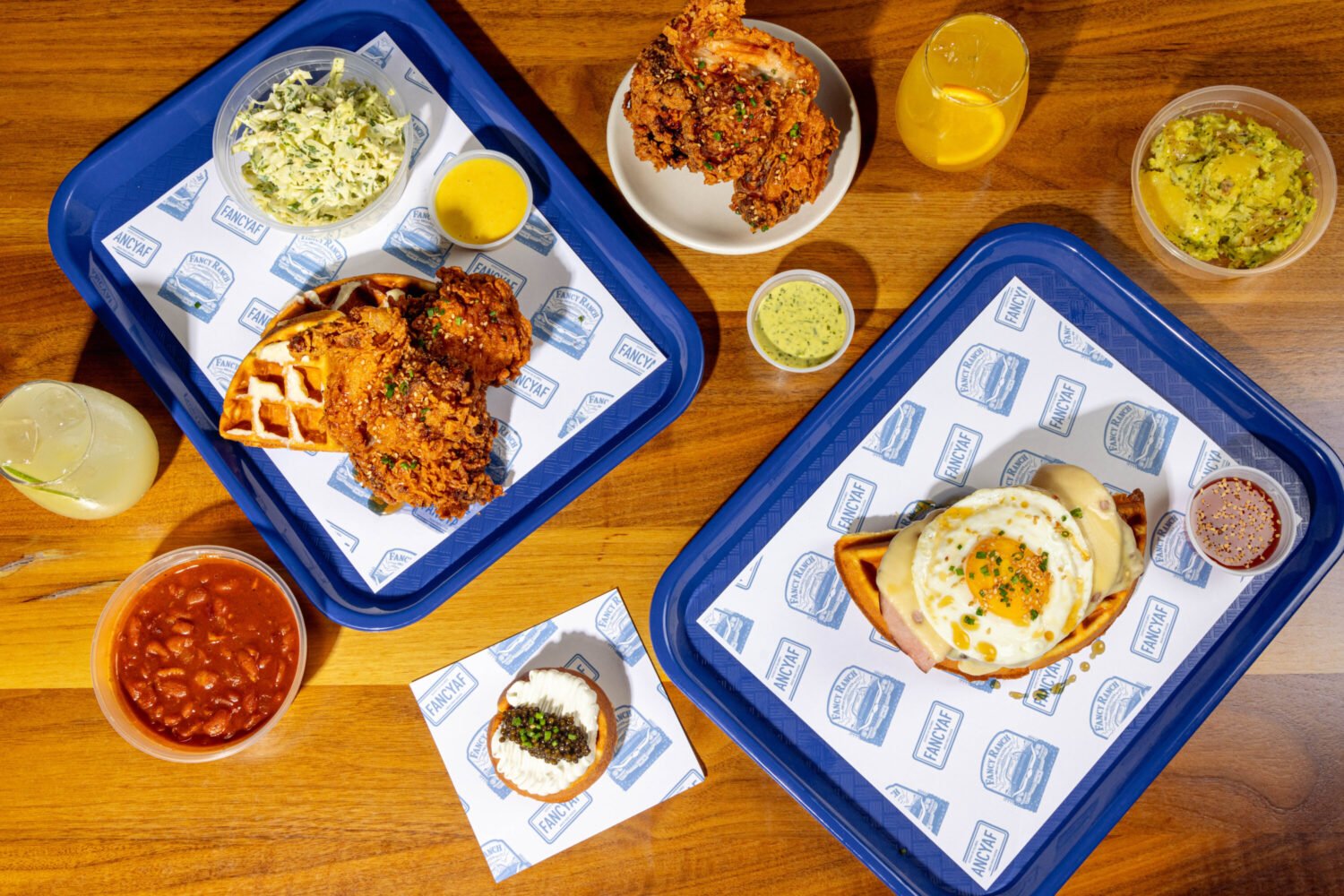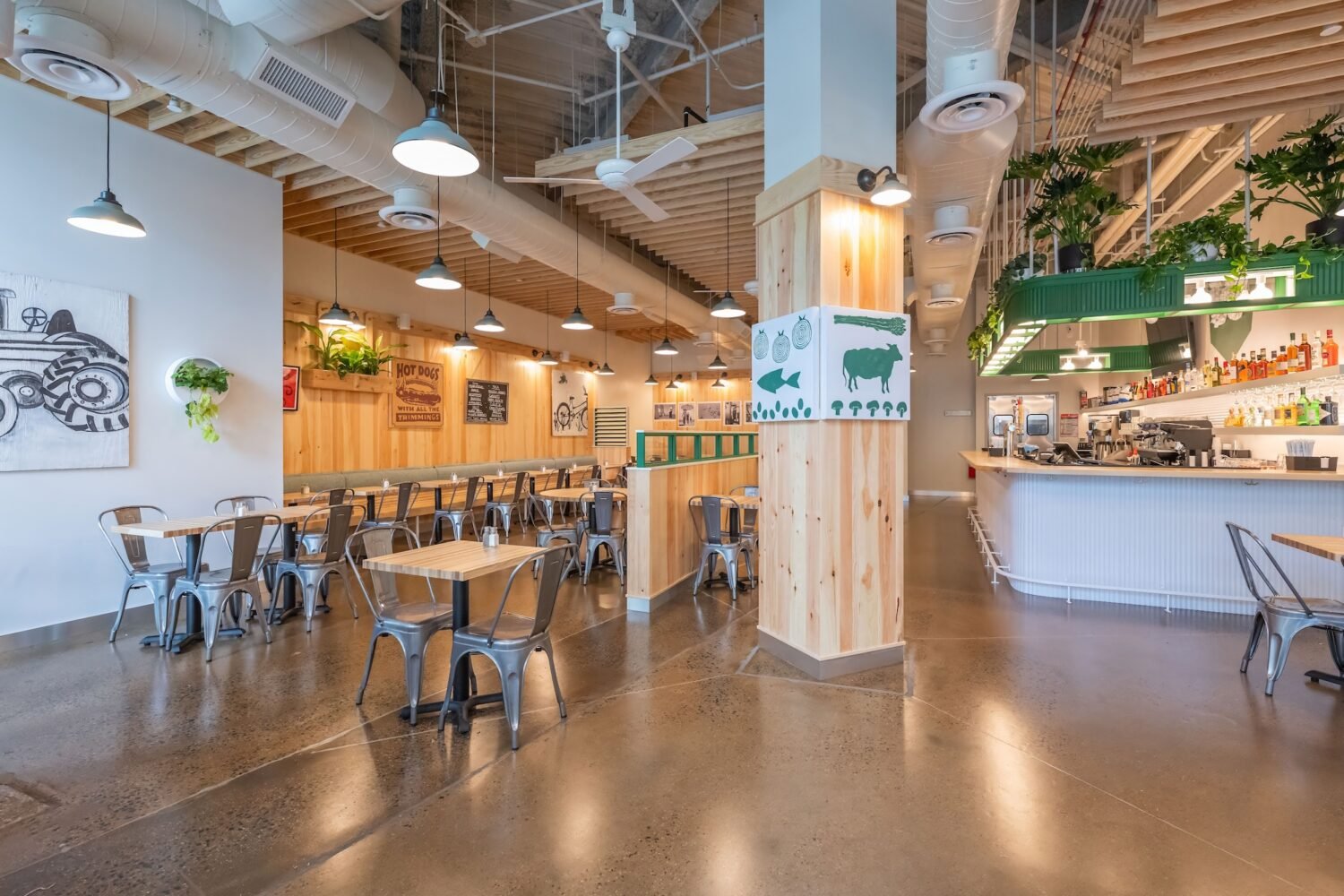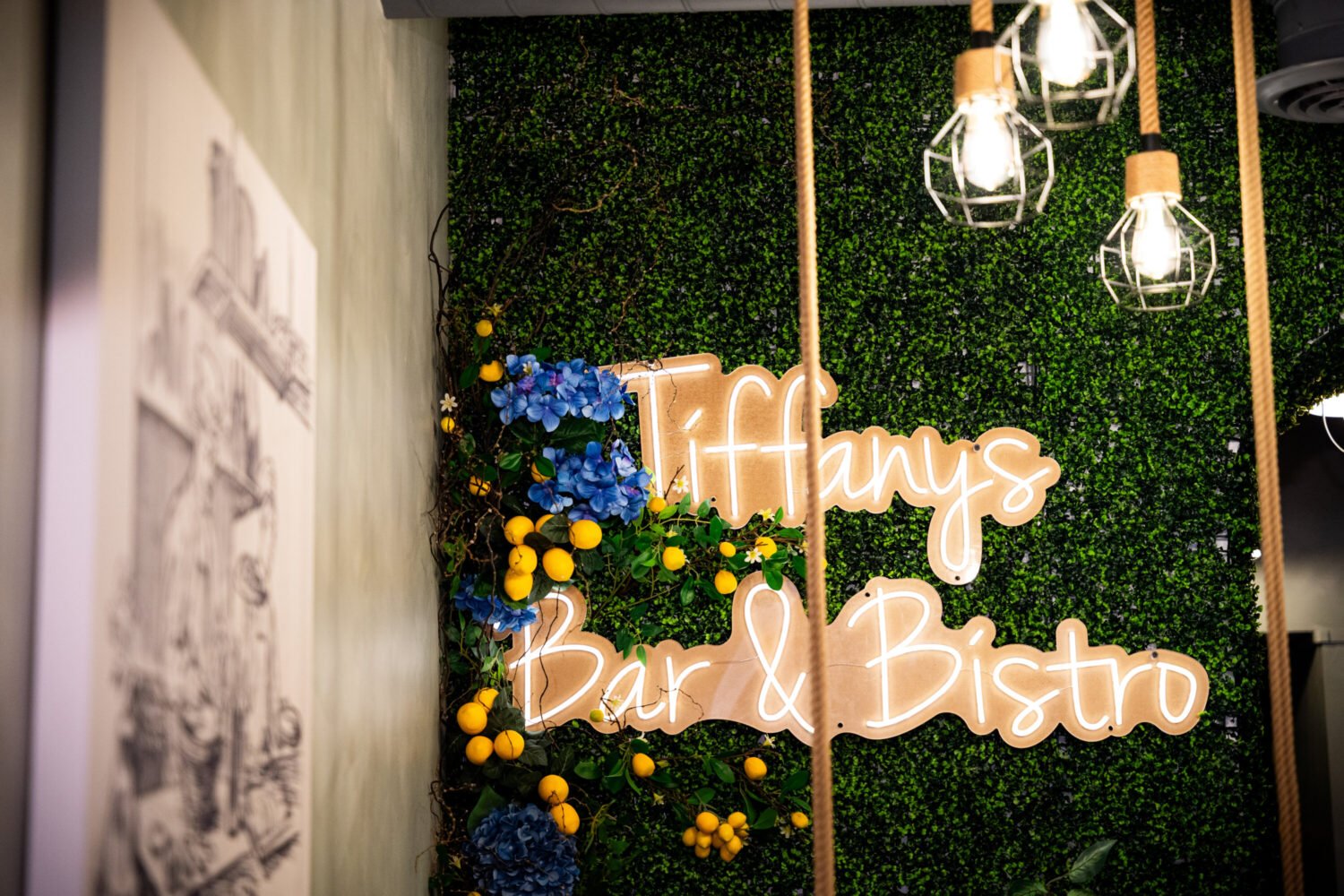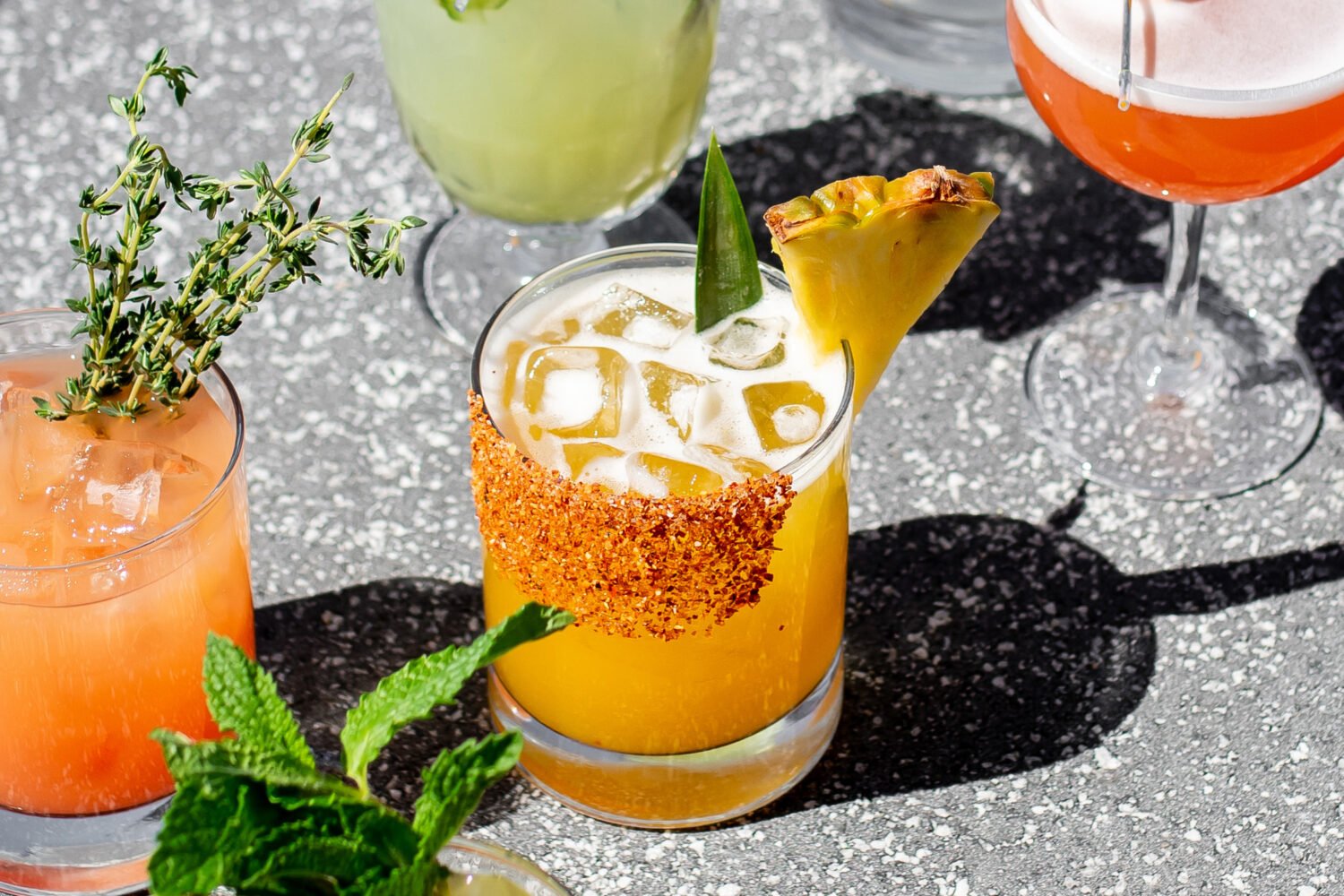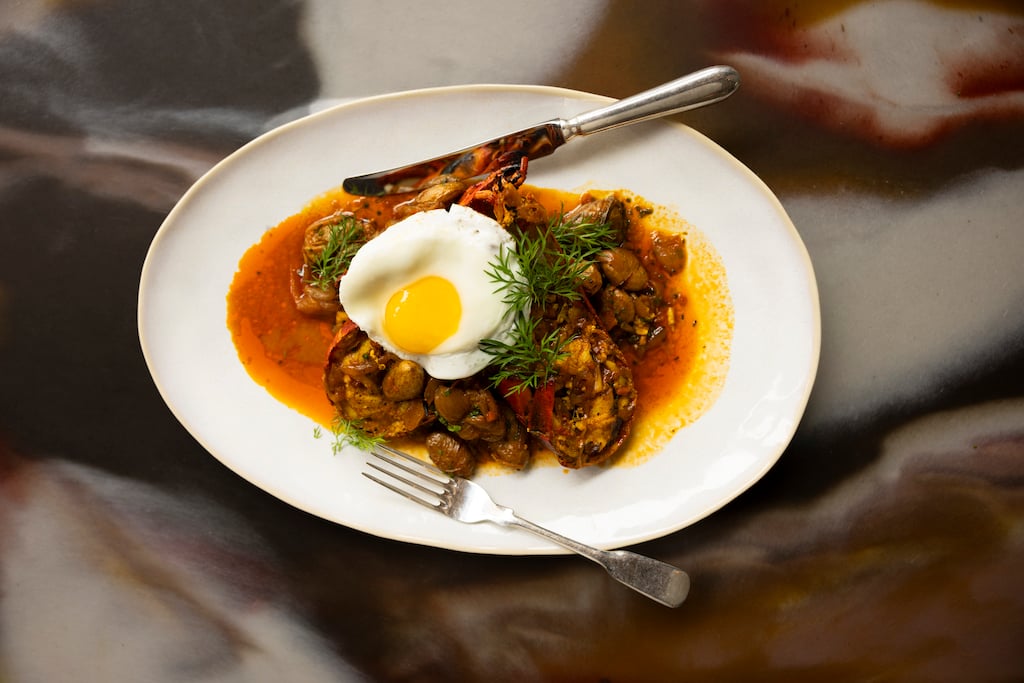About Restaurant Openings Around DC
A guide to the newest places to eat and drink.
Reverie. 3201 Cherry Hill Lane, NW.
Chef Johnny Spero woke up to a flurry of missed calls and texts in the middle of one night in August of 2022. A fire had broken out at his Georgetown fine-dining restaurant Reverie. Spero rushed to the scene to find shattered glass, water-soaked floors, and every inch of the dining room turned black. Wine glasses and refrigerators had melted like candles. The acrid smell is still engrained in his head. No one was hurt, but everything was destroyed, including Spero’s personal collection of cookbooks and knives.
Spero took a day to mourn, but then immediately set his sights on rebuilding Reverie. “We put so much of ourselves into that restaurant to get to where we want it to be. If we opened it anywhere else in the city, I feel like it wouldn’t be the same restaurant,” Spero says. “I was determined to reopen in that same space.”
View this post on Instagram
In the meantime, Spero took Reverie on the road, hosting a residency at José Andrés’s Minibar and popping up at restaurants from San Francisco to Seoul. He later learned from investigators that the fire was a “freak accident”—an electrical outlet near the dish pit that sparked and spread. It likely didn’t help that because of all the seafood, linens were covered in hyper-flammable fish fat.
A year and a half later, Reverie is back. The Michelin-starred restaurant is set to reopen Tuesday, March 26, with a moodier look and totally new tasting menus for $255 per person. (Reservations go live on Resy Friday, March 15.) “It’s this reset that I didn’t necessarily want but I’ll take,” Spero says. “I’m a very different person from when I started this process. I have a very different outlook on what I want out of that restaurant and as an experience, so we get to kind of rethink and retool everything.”
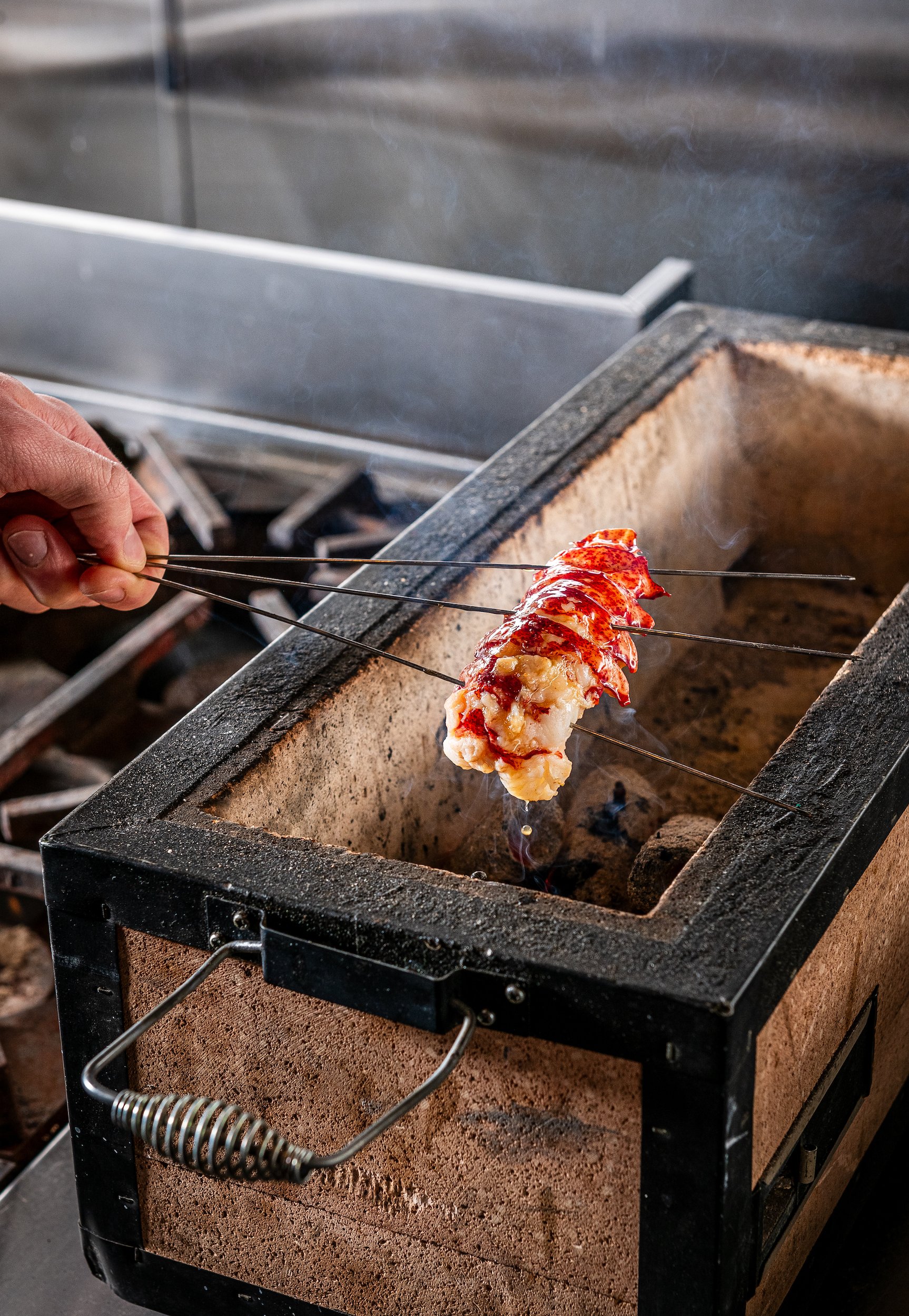
The new 12-to-16-course menu continues to focus on East Coast seafood and vegetables with esoteric dishes like savory potato-onion doughnuts filled with sweet glazed eel. Maine lobster makes appearances in multiple dishes: The tails, poached then grilled, are brushed in Korean-style “rice honey” made with a starchy mix of rice and barley reduced to a honey-like texture. It’s served with a sauce made from a lobster stock that’s enriched with melon seed, butter, and Spanish cider.
There will also be a separate vegetarian menu where you’ll find dishes like celery root cooked in a clarified butter with chamomile and jasmine until tender and crispy, then served with a light, floral vegetable broth poured over top. “Instead of this heavy, bogged down root vegetable dish, this is a lighter interpretation,” Spero explains.
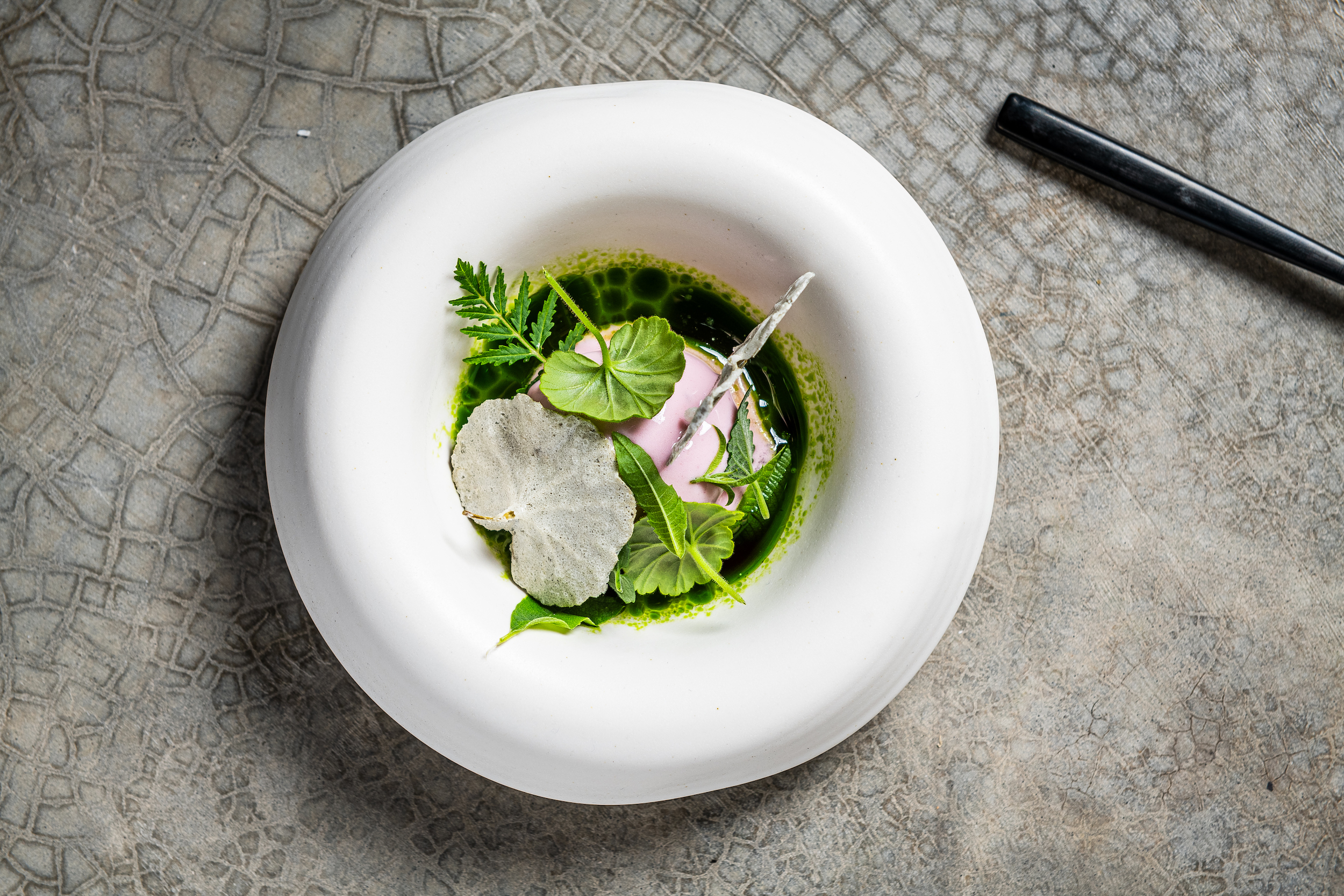
For dessert, there’s strawberry milk sorbet made with a strawberry gochujang from a family Spero met while in South Korea. It’s served with “frosted” geranium and lemon verbena and a really intense juice using the same fresh herbs. To make one of the last bites of the meal, Spero takes the stipes, or stems, of kelp and cooks them in vanilla syrup. “It’s like this candied, calcified little kelp slice that tastes like vanilla bean, looks like vanilla bean, but it’s entirely made of seaweed,” Spero says.
To drink, expect sustainable and low intervention wines and spirits, including non-alcoholic options. (Spero himself no longer drinks alcohol.) An alcoholic pairing goes for $165, and a non-alcoholic pairing is $95.
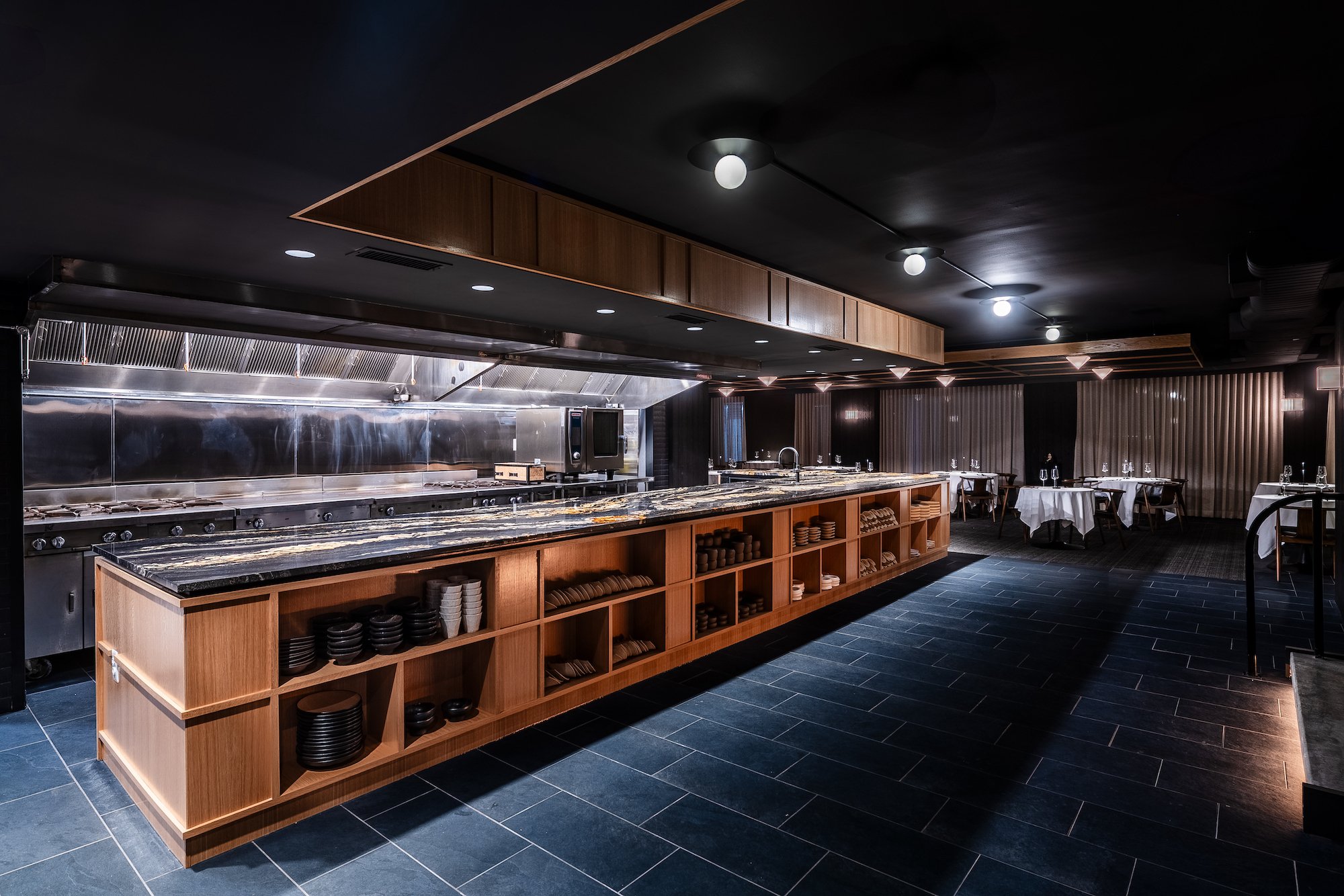
The rebuilt 36-seat space is a little darker and sexier: “We just wanted to kind of clean it up and put a button-up shirt on it, but it’s still probably untucked,” Spero says. Seating at the 20-foot counter—now a black granite—is gone, giving the kitchen more space to work. White tablecloths have been added to the tables.
Another design detail offers the perfect metaphor: shou sugi ban wood, a Japanese technique of charring wood to make it more durable. “It’s rebirth and preservation through fire,” Spero says.

